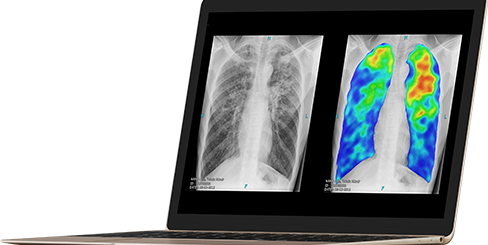
Company: Delft Imaging Product: CAD4TB
Evaluation of C-Reactive Protein and Computer-Aided Analysis of Chest X-rays as Tuberculosis Triage Tests at Health Facilities in Lesotho and South Africa
Clinical Infectious Diseases, 2024
Abstract
Background
To improve tuberculosis case-finding, rapid, non-sputum triage tests need to be developed according to the World Health Organization target product profile (TPP) (>90% sensitivity, >70% specificity). We prospectively evaluated and compared artificial intelligence-based, computer-aided detection software, CAD4TBv7, and C-reactive protein assay (CRP) as triage tests at health facilities in Lesotho and South Africa.
Methods
Adults (≥18 years) presenting with ≥1 of the 4 cardinal tuberculosis symptoms were consecutively recruited between February 2021 and April 2022. After informed consent, each participant underwent a digital chest X-ray for CAD4TBv7 and a CRP test. Participants provided 1 sputum sample for Xpert MTB/RIF Ultra and Xpert MTB/RIF and 1 for liquid culture. Additionally, an expert radiologist read the chest X-rays via teleradiology. For primary analysis, a composite microbiological reference standard (ie, positive culture or Xpert Ultra) was used.
Results
We enrolled 1392 participants, 48% were people with HIV and 24% had previously tuberculosis. The receiver operating characteristic curve for CAD4TBv7 and CRP showed an area under the curve of .87 (95% CI: .84-.91) and .80 (95% CI: .76-.84), respectively. At thresholds corresponding to 90% sensitivity, specificity was 68.2% (95% CI: 65.4-71.0%) and 38.2% (95% CI: 35.3-41.1%) for CAD4TBv7 and CRP, respectively. CAD4TBv7 detected tuberculosis as well as an expert radiologist. CAD4TBv7 almost met the TPP criteria for tuberculosis triage.
Conclusions
CAD4TBv7 is accurate as a triage test for patients with tuberculosis symptoms from areas with a high tuberculosis and HIV burden. The role of CRP in tuberculosis triage requires further research.
Read full study